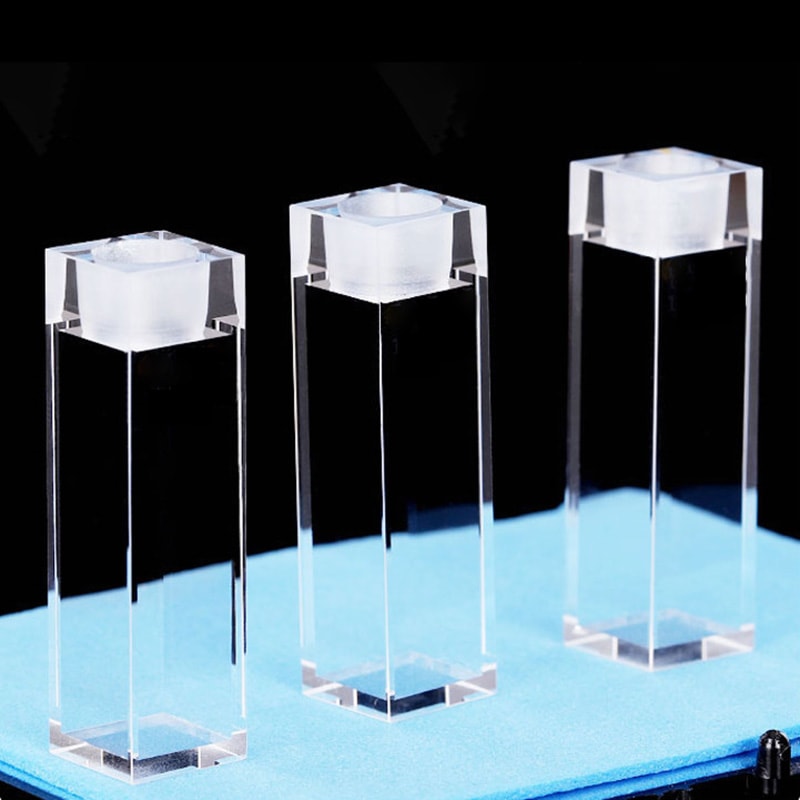The Role of Cuvette Size in Ensuring Correct Clinical Analysis
The Role of Cuvette Size in Ensuring Correct Clinical Analysis
Blog Article

The Benefits of Cuvettes and Quartz Vials in Clinical Research
In medical study, the accuracy and reliability of measurements are paramount, specially in areas like spectroscopy, compound analysis, and biology. One important ingredient that assures precision in these reports could be the cuvette, especially quartz vial. Knowledge the benefits of cuvettes and the features of using quartz vials can significantly impact the outcome of tests and lab work.
Precision in Spectroscopy
Cuvettes are essential for keeping fluid samples in several logical instruments, such as spectrophotometers. These units gauge the absorbance or indication of light through an example, and the cuvette serves as the container for the taste all through analysis. The measurement and material of the cuvette enjoy an essential position in ensuring the precision of the measurements. Quartz vials, especially, present excellent visual understanding, enabling appropriate light sign across a wide variety of wavelengths, including uv (UV) light. This makes quartz vials a fantastic choice for spectroscopic experiments, where accuracy is critical.
Durability and Chemical Opposition
Quartz vials be noticeable because of their longevity and opposition to tough chemicals. Unlike plastic cuvettes, quartz vials are less inclined to weaken or respond with substances in the test, ensuring that the outcome of the test stay unaffected by possible contamination. This quality makes quartz vials particularly useful in situations wherever aggressive solvents or high temperatures are involved. Their ability to tolerate serious conditions without diminishing the reliability of the sample is one of many major reasons they are favored in lots of lab applications.
Accuracy in Size and Form
The size of a cuvette is not really a one-size-fits-all situation. The aspect of the cuvette, such as for instance their path size, influences the amount of the test and the quantity of gentle that passes through. Selecting the correct cuvette size for the particular test assures that the answers are maybe not manipulated as a result of under or over-concentration of the sample. Quartz vials come in a number of measurements and patterns, enabling analysts to pick the most proper alternative based on the demands of the experiment. That flexibility plays a role in more correct data and allows for greater get a grip on over fresh conditions.
Openness and Mild Indication
Quartz is noted for its extraordinary openness, particularly in the uv (UV) and obvious mild spectra. This makes quartz vials suitable for use within instruments that need clear visual routes, such as for instance UV-Vis spectrophotometers. The superior gentle transmission properties of quartz make sure that the mild passes through the test with minimal scattering or assimilation, resulting in more precise readings. For experiments that demand large detail, quartz vials provide a distinct gain around other materials.
Long-Term Reliability
When employed in study labs, it is essential to have reliable instruments that keep their reliability over time. Quartz vials are not just chemically resilient but in addition highly tough, meaning they are less inclined to experience use and tear. This long-term consistency guarantees that analysts can use quartz vials for prolonged intervals without worrying all about degradation or the need for repeated substitutes, contributing to cost-effectiveness in the long run.
In conclusion, equally cuvettes and quartz vials provide a range of benefits that increase the standard and accuracy of laboratory experiments. From their remarkable optical quality to their substance opposition and longevity, these tools are crucial in medical research. By selecting the right cuvette size and using quartz vials, researchers can guarantee precise measurements and achieve more reliable results in their studies. Report this page